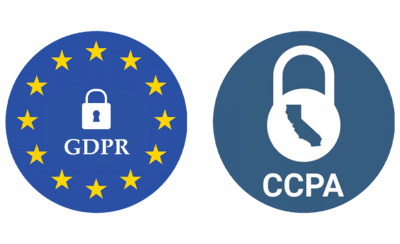Workplace Mental Health Risk Assessment Template

In many countries, depending on the size of your company, it is often mandatory to have a risk assessment protocol written down for anything that has to do with the safety of your staff, both physical and mental.
While it may seem relatively easy to list potential accidents, it can be rather tricky to assess mental health struggles and their triggers.
We’ve put together this workplace mental health risk assessment template, identifying areas and questions to ask that you can tweak and adapt to your situation, to help you get started!
Remember, for this to work and be relevant you need to be as realistic and honest as possible when listing potential risks and current situation. Truly understanding the situation is the first step towards change!
I – Identify the risks and potential stressors
These might be different depending on the type of company, industry, size, and whether it is fully remote or not, but in general, we can identify 7 areas of stressors, which we discuss below. Under each section, we have outlined some questions, which you might be willing to write down the answer, whether “Yes”, “No” or “Not sure”.
1. Environment
That can mean:
- Ergonomic set up
- Light and air quality
- Spaciousness space
- Noise pollution
- Comfortable temperature (too cold or too warm)
- Inclusive design (difficult to access for people with reduced mobility…)
These are just a few of the environmental stressors that you could potentially identify in your workspace.
When identifying risks within the environment section, answer to the best of your ability the following questions:
- Are there physical hazards (noise, temperature, chemicals, etc.)?
- Is it true to say that the physical and mental requirements of the work have not been taken into account in the design of the workplace in relation to the abilities of the employees?
If your team is hybrid or fully remote, ask yourself what kind of support the company currently offers to make sure every employee has a safe work environment at their home office.

2. Role demands
That encompasses:
- High workload
- Frequent overtime
- Demands are not in line with the job description
- High pace
Here are some of our suggested questions to answer truthfully:
- Do employees work regularly or temporarily under high pressure (rush work, tight deadlines)?
- Are employees’ workdays regularly or temporarily long?
- Is the workload regularly or temporarily very high?
- Is the work monotonous?
- Is it true to say that employees do not know what their responsibilities are?
- Are conflicting demands placed on employees?

3. Control / management
Things like:
- micromanagement,
- how much freedom staff have on how their work is done
- bottlenecks
Suggested questions:
- Do new employees start work without adequate introductory training and guidance?
- Do employees lack the opportunity to influence the way they work?
- Do employees lack the opportunity to influence the content of their work?
- Do employees lack the opportunity to plan their work, make their own decisions, and take responsibility?
- Are tasks so fragmented that employees do not understand their contribution to the final product?
- Is the working time fixed?

4. Support
That can mean:
- on and offline resources such as apps, first-aiders and third parties
- Celebration/encouragement
- programs and training in house or via third-party professionals
Suggested questions:
- Do employees feel a lack of both positive and negative feedback?
- Do employees lack recognition and are they not rewarded for exceeding expectations?
- Do employees lack support from managers and colleagues?

5. Relationships
That entails:
- How people address each other,
- existing culture: rituals and traditions
- how good and bad behaviors are addressed
- conflict management
Suggested questions:
- Is the social climate at the workplace poor?
- Is cooperation between employee groups (e.g. departments) poor?
- Are there interpersonal or intra-group conflicts among employees?
- Do work problems and problems between employees and management remain unresolved?
- Is competition among employees strong?
- Does bullying or harassment occur?

6. Change
Do you and your colleagues know:
- How are changes dealt with?
- How it is communicated?
Suggested questions to explore:
- Is it true that employees are left unsupported during periods of change or when the company’s future is uncertain, in order to avoid discontentment?
7. Others / personal
Anything related to particular cases, one-to-one situations. If anyone has particular needs that might trigger mental health issues…
What now?
To assess your company’s risk levels, check how many of these questions were answered positively.
We suggest that it is better to be strict rather than lenient when answering these questions. It will help improve the situation faster.
One way of assessing risk could be the following:
- Risk level 0: no answers were answered positively.
- Risk level 1: there were up to two “YES” answers in total across all questions
- Risk level 2: there was at least one “YES” answer in each subcategory
- Risk level 3: five or more “YES” answers.
If you find out that your company or team is at risk level 2 or 3 here are some measures to pay attention to to start improving your score and your company’s overall well-being:
In terms of Role demand:
- Clearly define employees’ tasks, functions, and responsibilities.
- Ensure that adequate resources are generally available, and especially during times of high demand.
- Restructure activities and workflow to avoid bottlenecks and recurring times of high workload.
- Alert employees in advance about production plans and periods of potential high stress.
- Monitor the workload and systematically check how employees cope with very high physical and mental workloads.
- Keep overtime to a minimum and agree on ways to compensate for periods of very high workload.
- Ensure that employees have sufficient training and skills to perform their tasks.
- Encourage employees to continuously develop their skills.
- Expand the scope of job duties to diversify work.
In terms of Task Management
- Consult with employees and their representatives about work organization, content, and volume.
- Show trust to your employees by delegating responsibility and problem-solving.
- Continuously monitor employee satisfaction with their work.
- Enhance employees’ sense of involvement in their work, for example by emphasizing the broader impact of their work and highlighting their role and contribution to the final product or service.
- Introduce flexible working hours and family-friendly solutions.
In terms of Social Climate
- Develop and implement measures for resolving conflicts in the workplace.
- Hold a meeting to discuss existing problems among employees. Encourage employees to find the causes and solutions to problems.
- Provide training in interpersonal conflict resolution. Ensure especially that managers have received the necessary training and can lead people.
- Develop and implement an anti-bullying policy.
In terms of Support
- Teach managers how to give constructive feedback and how to praise and support subordinates.
- Have proper onboarding training for new employees; involve experienced employees as guides, teachers, and mentors for new employees.
- Communicate with employees and their representatives in a clear and public manner about all planned changes (including layoffs) before, during, and after the changes.
- Allow employees to discuss and influence changes.
- Provide specialized training and professional counseling to employees being laid off regarding their future careers.
Even if you find yourself at a low-risk level, this should not prevent you from addressing these issues. Left “untreated”, problems tend to grow rather than disappear on their own.
II – Assess what is already in place (third party, trainings..)
This is your opportunity to thoroughly review what the company has already put in place and offers employees to monitor and reduce those risks.
- List the efforts the company has done to improve the workspace or work from home set up
- Explain what is in place to make sure the expectations match the reality in terms of workload and management
- Share what kind of flexibility staff has with their tasks
- List what kind of support is offered to staff currently in terms of mental health and well-being
- Share about the company culture, guidelines, values, and rules.
- Explain how change is handled and communicated to the whole company
Now you are ready to make a plan towards progress!
III – Action plan to improve MH and well being

Now that you have identified the risks and identified what is currently in place there are a few important things left to do:
- Stay on top of innovation and research what can be improved in each area and what to do in case of crisis/emergency
- If needed, improve processes (how staff is being informed of what is in place )
- Assign clear responsibility. Without an official person in charge, the responsibility can quickly fall into the limbo of the commons
- Set up deadline for new implementations
- Monitor, review, and update regularly
It is never too late to start assessing mental health and well-being risks in your company.
It can seem daunting at first but it does not need to be.
Start with what you know and enlist the help of professionals and third parties when needed. Do not assume answers, be honest and see your team’s mental health improve along the way!

Want to know more about how Siffi is helping organisations? Check out our services
Recent Posts
 mental well-being and coaching services
mental well-being and coaching services 

